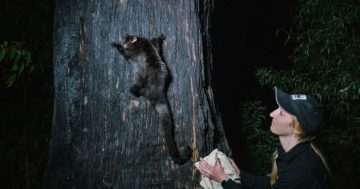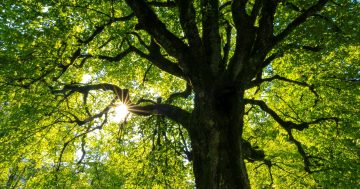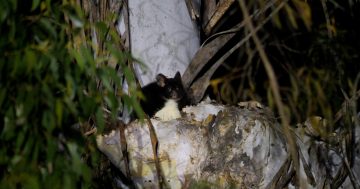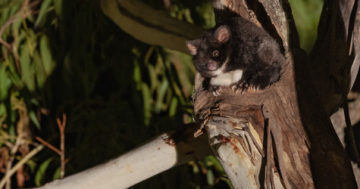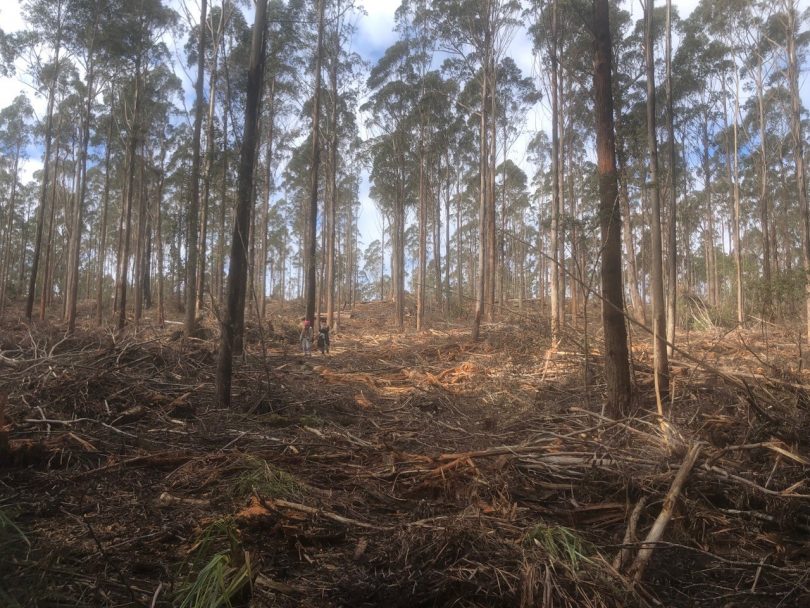
Tantawangalo State Forest June/July 2019. Photo: Peter Day.
The Forestry Corporation of NSW says its current operation in the Tantawangalo State Forest, southwest of Bega is about promoting sawlog growth, as the value of woodchipping native forests is again brought into question.
Peter Day is a concerned resident and one of those behind the Tantawangalo Forest protest page on Facebook. “They seem to be logging continually, I can see and hear the machines from here,” he says.
“Every single tree that is coming out of these four compartments, 100 per cent of the logs are being sent to the chip mill in Eden where they are chipped and sent off to Asia to make disposable paper products like tissues, nappies and toilet paper.”
The Forestry Corporation’s Harvest Plan for compartment 2407 confirms 9,000 tonnes of pulp will be extracted from the forest as part of a “thinning operation”.
“This compartment in Tantawangalo State Forest was last harvested in the 1980s and is regenerating well, and we are now carrying out a thinning operation to promote sawlog production,” a spokesperson for the Forestry Corporation says.
“Thinning means removing the smallest and weakest trees to provide the more dominant and vigorous trees space and light to grow, which can be important when managing light-hungry species like eucalypts.
“There is some low-quality timber produced that is suitable for pulp production, it is simply a by-product of the operation.”

Tantawangalo State Forest June/July 2019. Photo: Peter Day.
Mr Day says to see the forests devalued and chipped is devastating, “we are 1000 metres above sea level in these forests, and they do contain areas of old-growth forests, large rocky outcrops, montane wetlands, headwater habitat, and the forest is home to many many species of fauna and flora that are listed as vulnerable and threatened.”
“For instance, this area used to have koalas, the last koala was spotted here in 1992, the last spotted tail quoll was spotted in these forests – that was 2003.
“And there’s the remaining species that are threatened, things like the powerful owl, the masked owl, yellow-bellied gliders, gang-gang and black cockatoos, various robins.
“All these creatures are listed by the State and Federal Governments as being threatened and yet the protection they are afforded is minimal.”

Tantawangalo State Forest June/July 2019. Photo: Peter Day.
The Forestry Corporation describes the operation as being low-intensity, “meaning only a small number of trees are disturbed in order to encourage better growth of the remaining forest.”
“Forestry operations in NSW are tightly regulated and there are robust measures in place to protect native flora and fauna,” the spokesperson says.
“We spend many months before every operation carrying out detailed planning, which includes detailed ecological surveys, and large areas are set aside for protection and conservation of native flora and fauna and forest biodiversity.”
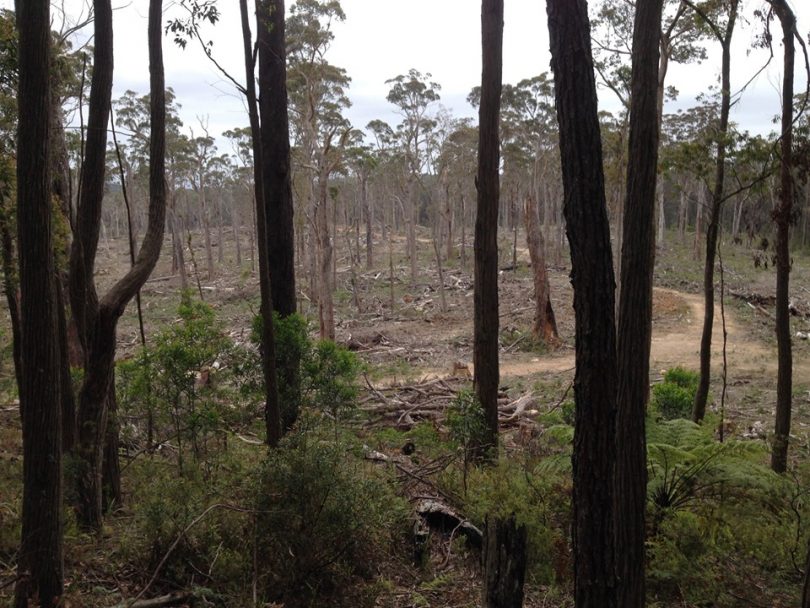
Tantawangalo State Forest June/July 2019. Photo: Peter Day.
Mr Day says the Environmental Protection Authority is currently investigating logging non-compliances in Tantawangalo State Forest and says locals are equally keen to hold them to account.
“People don’t realise this is going on and when I tell them they are very concerned about the local environment being destroyed, and they ask – why are we still logging these forests when we have a climate emergency?”
“If they were going to use the logs for making furniture, for building materials – that would be better,” Mr Day says.







